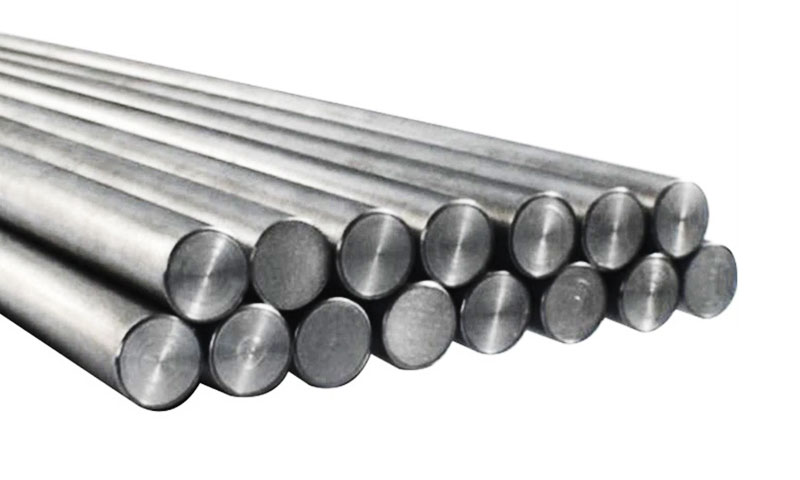1. Zavedení
NÁS S20910 (commonly marketed as Nitronic 50 nebo XM-19) and UNS S21800 (commonly marketed as Nitronic 60 nebo Slitina 218) are advanced austenitic nerezové oceli engineered for demanding service.
Both deliver better performance than conventional 300-series grades, but they are optimized for different priorities:
- S20910 (Nitronic 50) je a odolný vůči korozi, nitrogen-strengthened austenitic stainless optimized for high corrosion resistance (including sour service), dobrá síla, Vynikající houževnatost (including cryogenic), a dobrá svářetelnost.
It is often specified where resistance to pitting, SCC and low-temperature toughness are required together with reasonable strength. - S21800 (Nitronic 60) is formulated primarily for wear and galling resistance while retaining corrosion resistance typical of austenitics.
It contains high silicon and manganese for tribological performance and is selected where sliding contact, Galling, and high wear are the dominant failure modes.
This article compares composition, mechanical and corrosion behaviour, výroba, and real-world application trade-offs so you can select the right alloy for a specific component or environment.
2. What Is UNS S20910 (Nitronic 50)
NÁS S20910, běžně známý jako Nitronic 50 nebo XM-19, je a high-performance nitrogen-strengthened austenitic stainless steel.
It is engineered to deliver a combination of Vynikající odolnost proti korozi, vysoká síla, tažnost, a houževnatost, including at cryogenic temperatures.
These attributes make it well-suited for demanding industrial applications such as chemical processing, mořské prostředí, and sour-service conditions.
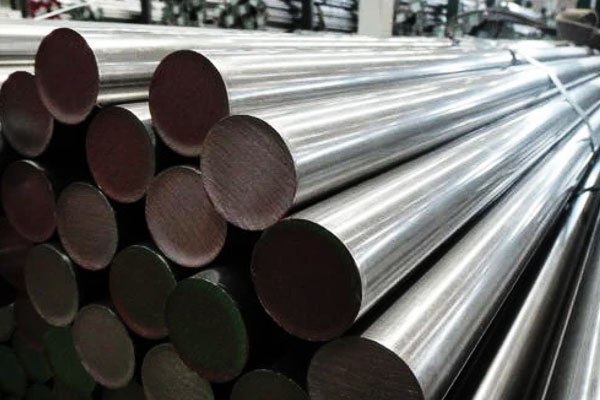
Key material designations and specifications zahrnout:
- ASTM A276 / A479 (as XM-19)
- UNS S20910
- Z 1.3964
Primary characteristics of UNS S20910 (Nitronic 50):
- Odolnost proti korozi: Enhanced by increased chromium, molybden, a obsah dusíku; highly resistant to pitting and crevice corrosion in chloride environments.
- Mechanická síla: Stronger than conventional 300-series stainless steels, with excellent yield and tensile properties.
- Ductility and toughness: Maintains performance at both elevated and cryogenic temperatures.
- Fabrication and weldability: Can be machined, vytvořeno, and welded with conventional techniques; solution annealing restores ductility after cold working.
- Nitrogen-strengthened: Nitrogen addition increases yield strength and contributes to pitting resistance without compromising austenitic ductility.
- Application suitability: Listed in NACE MR0175 for sour service, suitable for marine hardware, Chemické procesní zařízení, Tlakové složky, and structural applications requiring corrosion resistance and mechanical performance.
3. What Is UNS S21800 (Nitronic 60)
NÁS S21800, běžně označované jako Nitronic 60 nebo Slitina 218, je a high-performance austenitic stainless steel designed primarily for wear and galling resistance, while maintaining good corrosion performance typical of austenitics.
Its specialized composition makes it ideal for applications where sliding contact, Adhesivní opotřebení, and high surface stress are primary concerns.
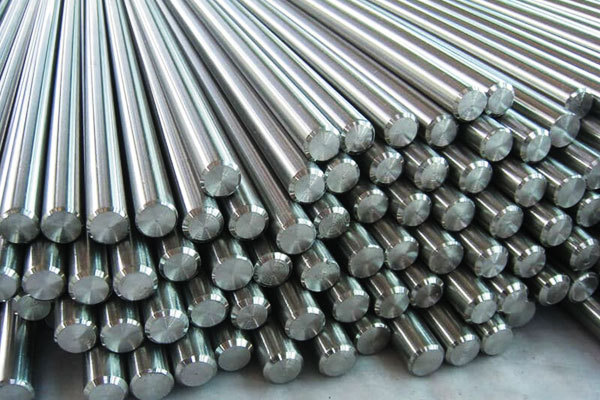
Key material designations and specifications include:
- ASTM A276 / A479 (for bars, pruty, and other wrought forms)
- UNS S21800
Primary characteristics of UNS S21800 (Nitronic 60):
- Wear and galling resistance: Elevated manganese and silicon content, combined with a nitrogen-strengthened austenitic matrix, provides superior resistance to Galling, Adhesivní opotřebení, and surface seizure.
- Odolnost proti korozi: While not as corrosion-resistant as Nitronic 50 in highly aggressive chloride environments, nabízí Dobrá obecná odolnost proti korozi suitable for moderate chemical and marine exposures.
- Mechanická síla: Exhibits high strength in both annealed and cold-worked conditions, with excellent surface hardness after work hardening.
- Fabrication and welding: Can be welded and fabricated using standard methods, though its higher silicon and manganese content may require adjustments in welding filler selection and machining parameters.
- Application suitability: Běžně se používá pro Stonky ventilu, upevňovací prvky, Hřídele čerpadla, bearing surfaces, and other components subjected to repeated sliding contact or wear-intensive service.
4. Typical Chemical Compositions and Alloying Differences
A critical factor distinguishing UNS S20910 (Nitronic 50) and UNS S21800 (Nitronic 60) is their alloying strategy, which directly influences corrosion resistance, Mechanická síla, wear behavior, and fabrication characteristics.
While both are nitrogen-strengthened austenitic stainless steels, they are optimized for different service priorities.
Representative Chemical Compositions (WT%) and Performance Role
| Živel | UNS S20910 (Nitronic 50) | UNS S21800 (Nitronic 60) | Key Role in Performance |
| Uhlík (C) | ≤ 0.06 | ≤ 0.10 | Controls strength, limits carbide formation; low C improves corrosion resistance and weldability |
| Chromium (Cr) | 20–23 | 16–18 | Primary contributor to corrosion resistance; higher Cr in S20910 increases PREN |
| Nikl (V) | 11–14 | 8–9 | Austenitový stabilizátor; zvyšuje houževnatost a tažnost; higher Ni in S20910 supports cryogenic performance |
| Mangan (Mn) | 5–6 | 8–9 | Increases work-hardening and galling resistance; high Mn in S21800 aids wear performance |
| Křemík (A) | ≤ 0.5 | 3.5–4.5 | Improves oxidation and wear resistance; higher Si in S21800 supports galling resistance |
| Molybden (Mo) | 1.5–3 | Není uvedeno / stopa | Zvyšuje odolnost proti korozi a štěrbiny; present in S20910 to resist chlorides |
| Dusík (N) | 0.10–0,20 | 0.08–0.18 | Strengthens austenitic matrix; Zlepšuje odolnost proti korozi; supports wear resistance in S21800 |
| Železo (Fe) | Váhy | Váhy | Maticový prvek; balances alloying; provides basic austenitic structure |
Interpretation: S20910 emphasizes Cr + V + Mo + N (classic austenitic corrosion alloying with nitrogen strengthening and Mo for pitting resistance).
S21800 trades some chromium and nickel for elevated silicon and manganese, which improve hardness, wear and galling resistance.
4. Mechanical Properties and Temperature Behaviour
NÁS S20910 (Nitronic 50) and UNS S21800 (Nitronic 60) exhibit distinct mechanical profiles reflecting their alloying strategies.
Klíčové mechanické vlastnosti
| Vlastnictví | UNS S20910 (Nitronic 50) | UNS S21800 (Nitronic 60) | Practical Implication |
| 0.2% Výnosová síla (MPA) | 350–420 | 320–380 | S20910 offers higher baseline strength for corrosion-critical applications; S21800 gains strength via work hardening |
| Pevnost v tahu (MPA) | 650–750 | 600–700 | S20910 provides slightly higher ultimate strength; S21800 maintains adequate tensile strength with wear focus |
| Prodloužení (%) | 30–45 | 25–40 | S20910 maintains excellent ductility; S21800 is slightly less ductile but sufficient for forming/fabrication |
| Tvrdost (HRB / HRC) | HRB ~85 typical annealed | HRB ~85, can be higher with work hardening | S21800’s higher Mn/Si allows superior surface hardness after cold work, enhancing galling resistance |
| Ovlivnit houževnatost (J at room temp) | Vynikající; retains toughness at cryogenic temps (-196° C.) | Dobrý; slightly lower than S20910 in cryogenic applications | S20910 preferred in low-temperature or highly dynamic loading applications |
| Elevated Temperature Performance | Good up to ~600–700°C | Reasonable; high Si improves oxidation resistance at moderate temperatures | S20910 favored for high-temperature corrosion exposure; S21800 for wear-exposed high-temperature components |
Temperature Behaviour
- Cryogenic Performance:
S20910 retains ~90% of impact energy at liquid helium temperatures, making it suitable for LNG storage, cryogenic piping, a letecké aplikace.
S21800 retains reasonable toughness but is not optimized for extreme low temperatures. - Výkonnost zvýšená teplota:
Both alloys maintain dimensional stability and strength at moderate elevated temperatures.
Nitronic 50’s Mo content provides additional resistance to high-temperature corrosion, while Nitronic 60’s high Si content improves oxidation resistance in sliding-contact applications. - Kalení práce:
Both alloys are austenitic and work-hardening, meaning mechanical properties, especially hardness and yield strength, can be increased via cold working.
S21800 benefits most due to high Mn and Si, improving wear and galling performance.
5. Corrosion Resistance and Pitting Resistance (Dřevo)
Ekvivalentní číslo odporu pittingu (Dřevo) is a useful indicator of resistance to chloride pitting; it’s calculated from Cr, Mo and N content (simplified form: PREN ≈ Cr + 3.3× mo + 16× n).
- Nitronic 50 (S20910) — higher Cr, Mo and N yield PREN values in the low-to-mid 30s (typical engineering figure ≈ ~34).
That places it well above 316L (PREN ≈ 20–25) and makes it suitable for many chloride-bearing environments, including some marine and sour service (it is commonly accepted for NACE MR0175 qualifying in many conditions—verify certificate). - Nitronic 60 (S21800) — because Mo is typically absent and Cr is lower, PREN is spodní (typical mid-20s or less depending on exact chemistry).
While S21800 resists general corrosion reasonably well, to je ne chosen primarily for pitting resistance; místo toho, it is used where galling and wear are primary concerns.
6. Nosit, galling and tribological performance
- Nitronic 60 (S21800) je navržen pro galling resistance and sliding wear.
High silicon and manganese, combined with work-hardening capacity, produce a surface that resists adhesive wear and metal-to-metal seizure.
Typical uses include valve stems, sedadla, upevňovací prvky, and pump components where repeated sliding contact occurs. - Nitronic 50 (S20910) nabídky Dobrý odpor opotřebení, but its primary strengths are corrosion resistance and toughness rather than optimized galling resistance.
It is sometimes used in wear applications where corrosion control is also required, but for extreme galling environments S21800 usually outperforms it.
7. Výroba, welding and heat-treatment considerations
Svařovatelnost
- Both alloys are svařovatelné by standard processes (TIG, MĚ, Smaw).
- S20910 (higher Ni/N) is highly weldable and retains corrosion resistance after welding when proper procedures and filler metals are used.
Low carbon and stabilized practices can minimize sensitization risk. - S21800 requires attention to heat input and filler selection because its high Si and Mn can influence weld metal composition; preheat/post-weld heat treatment practices depend on component size and code requirements.
Forming and machining
- Both are tvrdí austenitics; S21800’s higher Si/Mn can make cutting more challenging—tooling and speeds need adjustment.
S20910 in solution-annealed condition is generally easier to machine/form.
Tepelné zpracování
- These are austentic alloys—strength is primarily from cold working and alloying; full hardening by quench/tempering is not applicable.
Solution annealing can restore ductility and corrosion resistance (typical anneal ~1000–1100 °C followed by rapid cooling).
Hydrogen/sour service
- S20910’s chemistry and listing in some sour-service guidance make it suitable for H₂S environments (verify NACE/ISO certifications).
For sour service weld procedures and hardness limits (HRC thresholds) are normally enforced.
8. Applications of UNS S20910 vs UNS S21800 Austenitic Stainless Steel
The distinct alloying strategies, Mechanické vlastnosti, and corrosion/wear characteristics of UNS S20910 (Nitronic 50) a UNS S21800 (Nitronic 60) define their suitability across different industrial applications.
Applications of UNS S20910 (Nitronic 50)
UNS S20910 is engineered for vysoká odolnost proti korozi, Vynikající houževnatost, a dobrá svářetelnost, making it ideal for environments where both corrosion and mechanical performance jsou kritické.
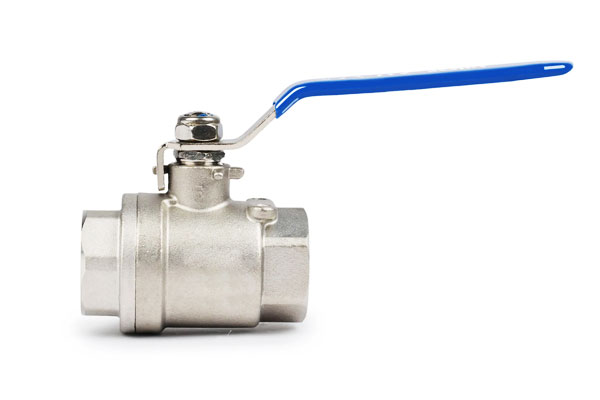
| Průmysl / Sektor | Typické aplikace | Key Performance Requirement |
| Marine & Offshore | Seawater fittings, Hřídele čerpadla, upevňovací prvky, ventily | Vysoká rezistence na chloridy, prevention of pitting/crevice corrosion |
| Chemikálie & Procesní vybavení | Výměníky tepla, reaktory, potrubí, tanky | Resistance to acids, chloridy, and sour service (Expozice) |
| Kryogenní aplikace | LNG storage and transfer piping, cryogenic valves | Retains toughness at extremely low temperatures (-196° C.) |
| Letectví | Fuel lines, cryogenic components | Vysoká síla, odolnost proti korozi, low-temperature ductility |
| Energie & Moc | Boiler components, turbine parts in corrosive environments | Combination of corrosion resistance and mechanical integrity |
Applications of UNS S21800 (Nitronic 60)
UNS S21800 is optimized for galling and wear resistance while maintaining reasonable corrosion performance.
It is ideal for mechanical components subjected to sliding, adhesive contact, or high surface stress.
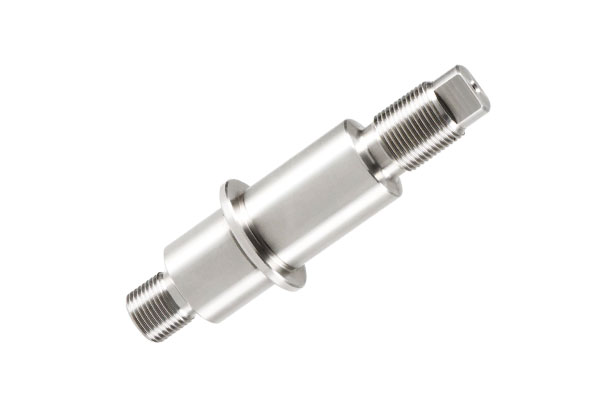
| Průmysl / Sektor | Typické aplikace | Key Performance Requirement |
| Ventil & Pump Industry | Stonky ventilu, sedadla, Hřídele čerpadla, upevňovací prvky | High resistance to galling, Posuvné opotřebení, adhesive seizure |
| Průmyslové stroje | Ložiska, pouzdra, high-wear mating surfaces | Tvrdost povrchu, work-hardening capability, Nízké tření |
| Automobilový průmysl & Těžké vybavení | Upevňovací prvky, high-wear components, ovladače | Galling prevention, durability under repeated sliding or contact |
| Marine aplikace | Deck hardware, mechanical joints | Moderate corrosion resistance with high wear/galling protection |
| Chemické zpracování | Mixer shafts, agitator blades | Wear-resistant components where moderate corrosion occurs |
Application Guidance
- Choose UNS S20910 when the primary concern is corrosion resistance in aggressive or sour environments, especially when toughness, svařovatelnost, and low-temperature performance are required.
- Choose UNS S21800 when Galling, nosit, and sliding contact dominate failure modes, even if corrosion resistance is less critical.
- In complex assemblies, hybrid designs can leverage both alloys—using S20910 for corrosion-critical parts and S21800 for high-wear mating surfaces.
Surface engineering such as povlaky, nitriding, or PVD treatments can further extend service life when combined with these alloys.
9. Direct Comparison Table: UNS S20910 vs UNS S21800
| Funkce / Vlastnictví | UNS S20910 (Nitronic 50) | UNS S21800 (Nitronic 60) | Practical Implication |
| Primary Focus | Odolnost proti korozi, houževnatost | Wear/galling resistance, Tvrdost povrchu | Guides selection based on environment and mechanical stress |
| Výnosová síla (MPA) | 350–420 | 320–380 | S20910 has higher baseline strength; S21800 can achieve higher surface hardness via cold work |
| Pevnost v tahu (MPA) | 650–750 | 600–700 | S20910 slightly higher; S21800 optimized for wear resistance rather than ultimate strength |
| Prodloužení (%) | 30–45 | 25–40 | S20910 more ductile; S21800 slightly less but adequate for fabrication |
| Tvrdost (HRB / HRC) | HRB ~85 typical annealed | HRB ~85, can increase with work hardening | S21800 better for galling and surface wear applications |
| Ovlivnit houževnatost | Vynikající; retains cryogenic performance | Dobrý; lower at cryogenic temperatures | S20910 preferred in low-temperature or dynamic loading environments |
| Odolnost proti korozi | Velmi vysoká | Mírný | Guides alloy choice in chemical, námořní, or sour-service applications |
| Nosit / Galling Resistance | Mírný | Velmi vysoká | S21800 is the preferred option for moving parts, Stonky ventilu, a spojovací prvky |
| Výroba & Svařování | Vynikající; solution annealed or strain-hardened | Dobrý; requires consideration for welding filler and machining parameters | S20910 easier to fabricate in complex geometries; S21800 may require tooling adjustments |
| Maximální teplota služby | ~900°C | ~750°C | S20910 suitable for higher temperature corrosion exposure; S21800 for wear-exposed moderate temperatures |
| Dřevo (Ekvivalentní číslo odporu pittingu) | ~34 | ~23.4 | S20910 provides superior resistance to pitting and crevice corrosion, zvláště v |
10. Závěr
NÁS S20910 vs. S21800 are complementary alloys within the Nitronic family.
Pick S20910 where corrosion resistance (especially pitting/crevice and sour service) plus toughness and weldability are paramount.
Pick S21800 where galling and wear dominate and corrosion is a secondary concern.
In many real applications the optimum solution is a combination—design the system so each part sees the alloy best suited to its dominant failure mode, or apply surface engineering to extend service life.
Časté časté
Are UNS S20910 and S21800 magnetic?
No—both are fully austenitic (or near-fully austenitic) V žíhaném stavu, with magnetic permeability <1.005 (ASTM A342). Cold working may induce weak magnetism, but this is reversible via annealing.
Can I weld S21800 with standard stainless fillers?
Ano, but select fillers and procedures to accommodate S21800’s high Si/Mn chemistry—consult welding procedure specifications and filler supplier guidance.
Which alloy resists sulfide stress cracking (SSC)?
S20910 is commonly accepted for many SSC environments and is used in NACE-subject applications; verify specific NACE/ISO certification and hardness limits.
Is Nitronic 60 (S21800) suitable for seawater?
It has reasonable general corrosion resistance in seawater but lacks the pitting resistance of Nitronic 50 or Mo-bearing grades; if seawater pitting is critical, choose S20910 or a higher PREN alloy.
Can either alloy be heat-treated to increase strength?
These austenitic alloys gain strength mainly by studená práce a zvržení; conventional quench/temper treatments are not used to significantly increase strength. Solution annealing restores ductility/corrosion resistance.
